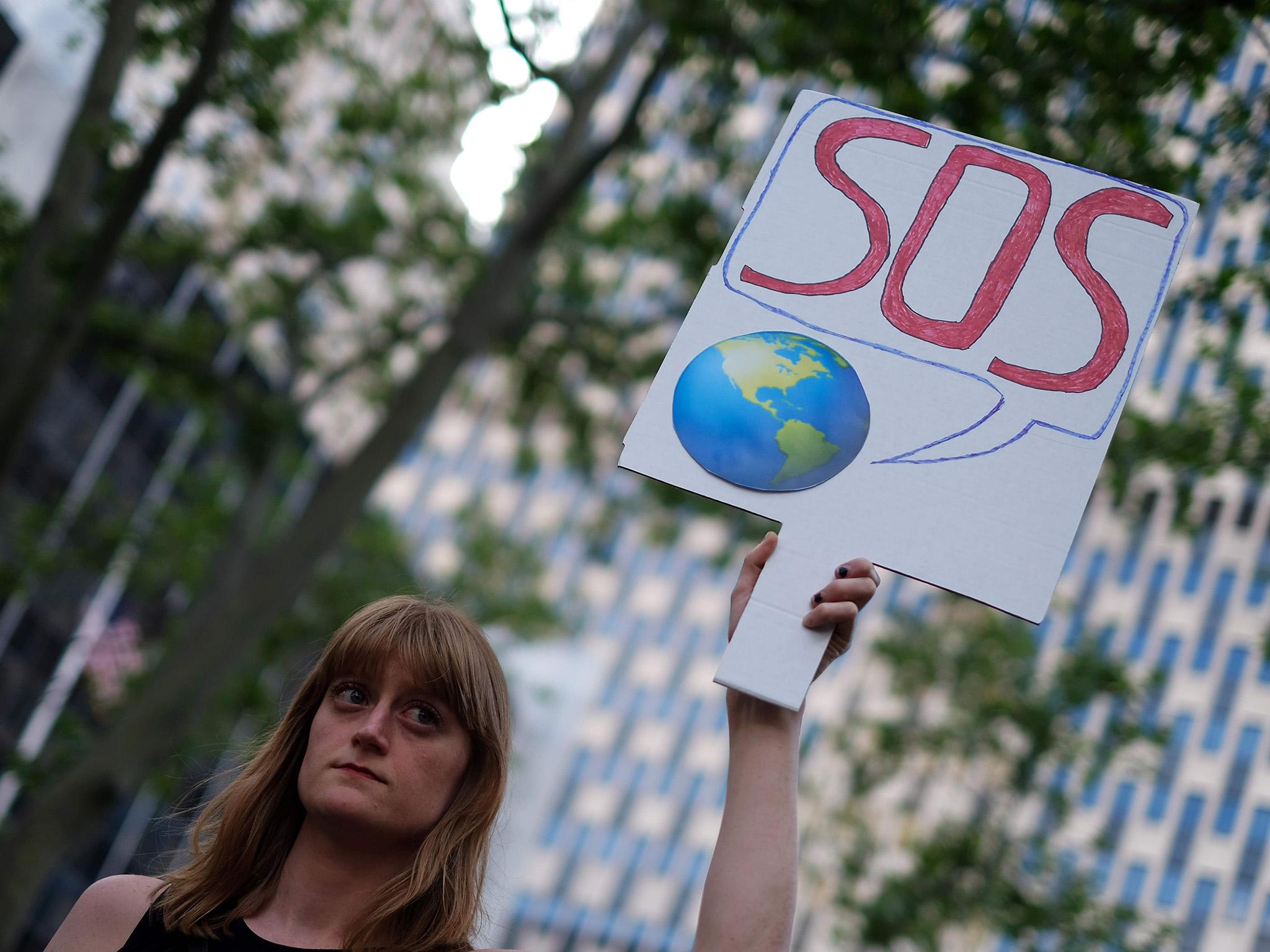The US is on track to cut carbon emissions faster than expected – and it's nothing to do with the Paris agreement
Although the proportion of total energy production from renewables overall in the US is still low, the direction of travel is clear


When politics and technology clash, bet on technology. That is the best guide to what will happen following the US withdrawal from the Paris climate agreement to cut carbon emissions. Whatever view you take of President Trump’s action – I happen to think it is an unforced error – the advance of technology will ensure that the US does indeed cut emissions even faster than it has promised to do under the accord.
Why? Well, step back a moment and consider why Uber drivers choose Toyota Priuses. They don’t do so because they are avid greenies. They do so because, taking into account all the costs, these are the cheapest cars for the job. The switch to fully electric cars may have hardly begun but I spotted a top-of-the-range Tesla S in the regular taxi rank at Newcastle station last weekend. Geordies in Teslas? Something huge is happening.
It is quite true that electric cars still emit carbon if the electricity they use is generated by fossil fuel power stations, but that is changing too with astonishing speed. At lunchtime one day a week ago, one quarter of the power used in the UK was being produced by solar. That was exceptional for it was a particularly sunny day, but you see the point. The move away from carbon fuels is happening much faster than predicted even two years ago.
There are three facets to the shift: increased efficiency in energy use, the switch to renewables, and the falling cost of electricity storage. A quick word about each, then a prediction.
Energy efficiency to most of us is a car with lower fuel consumption, a better-insulated home, or perhaps a shift in our habits to cut energy use. Think a bit deeper and you realise that companies and public bodies are doing the same: making small changes to try and use less energy. But there is something else going on that is even more important. It is the move away of developed economies from goods to services. Producing a service will, in general, use less energy than manufacturing something of the same value. As a result advanced economies are able to increase their GDP – become richer – without increasing energy use. This is happening in most countries but is dramatic in the UK, where energy use is lower than it was in the middle 1960s.
In the US, energy use has up to now fallen relatively slowly, compared with other developed countries. But even there the trend is set. Vehicle miles travelled per person have been falling for a decade, and electricity consumption is now slightly lower than it was in 2008. The trend towards lower use started later than in other developed countries but now seems to be following the same pattern.
The switch to renewables seems set in the US, driven by lower costs. It is a regional thing, with solar power in sunny states such as Arizona now cheaper than coal (the cheapest fossil fuel) and about the same as gas. Of course solar provides power only during daylight, but that is when power is most needed. The trick is to combine solar and storage so that the combination is as cheap as gas, and according to latest reports, the technology is just about there.
Of course you have to aim off a bit, for this is southern US where power is needed for air-conditioning, not the cold north where is it needed for heating. Although the proportion of total energy production from renewables overall is still low, the direction of travel is clear.
The final element of the story is electricity storage. The cheaper the storage, the more viable wind and solar become. The driving force here is battery packs for cars, the cost of which has fallen by nearly 80 per cent over the past six years, and will fall much further as mass production of electric vehicles soars. There is a global race to scale up the technology to store power on a scale than can enables grids to cope with peaks in demand without having to fire up gas plants. The UK is particularly advanced here. We are not there yet in cost terms but could be in five years.
Pull this together and what do you have? I suggest this. Under the Paris agreement the US was committed to reducing carbon emissions by 26-28 per cent over 2005 levels by 2025. Given the trends over the previous decade, at the time when the agreement was signed at the end of 2015, the reduction by 2025 looked like being between 20 per cent and 25 per cent. So by signing, the US was committing to speed up the process. But that was before the impact of the technological progress noted here really took hold. My guess is that, thanks to this progress, the US will have cut its emissions by at least 26 per cent and more likely by 30 per cent by 2025. In other words it will beat its own target.
Join our commenting forum
Join thought-provoking conversations, follow other Independent readers and see their replies
Comments